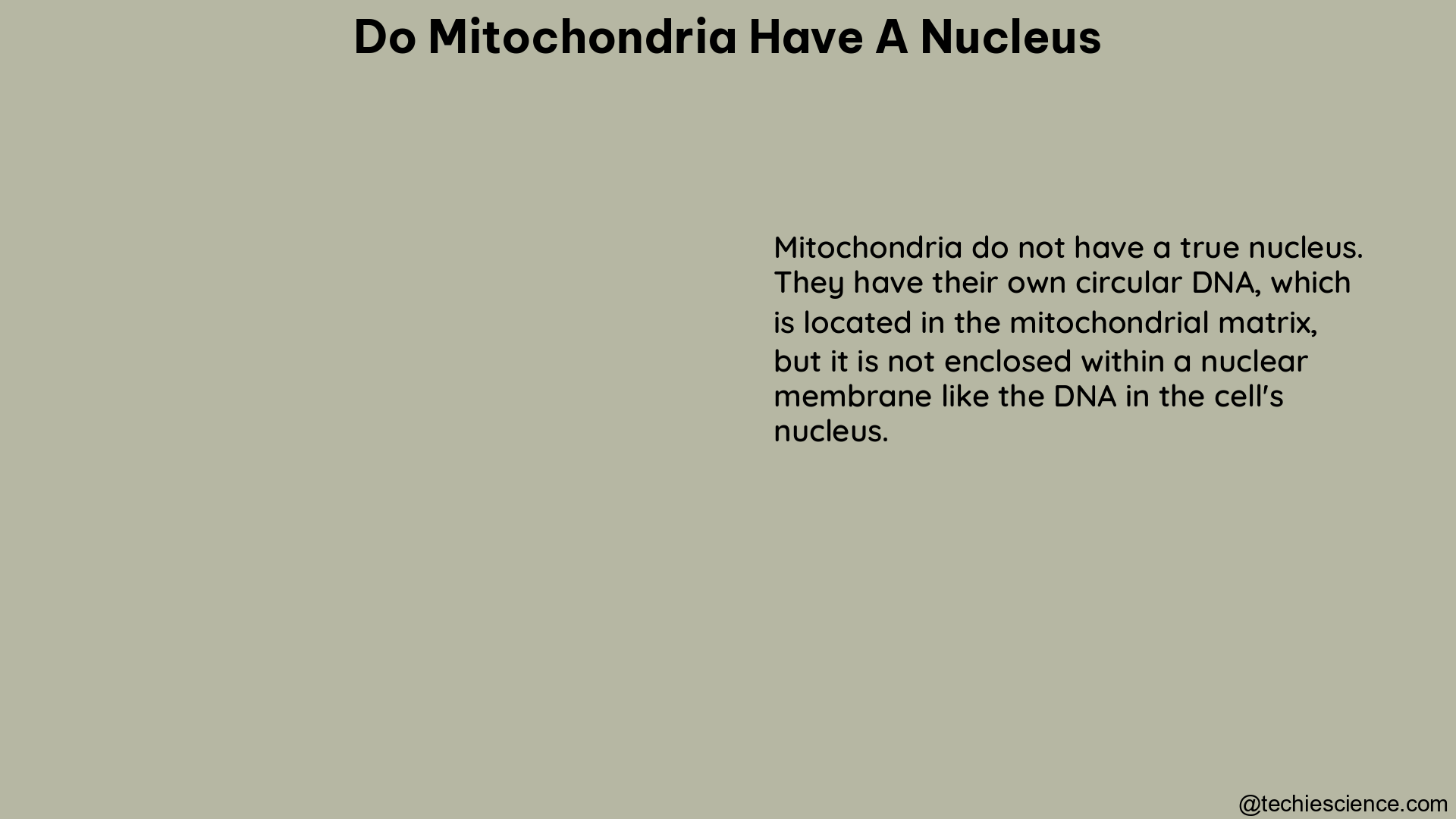Mitochondria are essential organelles found in the cells of most eukaryotes, responsible for the production of energy through the process of cellular respiration. While these organelles possess their own genetic material, they do not have a true nucleus like the one found in the host cell. This unique characteristic of mitochondria has significant implications for their structure, function, and evolutionary history.
Mitochondrial Genome and Protein Synthesis
Mitochondria have their own genome, known as mitochondrial DNA (mtDNA), which is substantially similar to bacterial genomes. This mtDNA is circular and typically much smaller than the nuclear genome, encoding a limited number of genes. The mitochondrial genome primarily encodes genes for ribosomal RNAs (rRNAs), transfer RNAs (tRNAs), and a few proteins involved in the electron transport chain and ATP synthesis.
However, the vast majority of mitochondrial proteins are not encoded by the mtDNA. Instead, they are synthesized from nuclear genes and transported into the mitochondria. This division of labor between the nuclear and mitochondrial genomes is a result of the endosymbiotic origin of mitochondria, which will be discussed in more detail later.
Mitochondrial Structure and Organization

Mitochondria have a unique internal structure, consisting of an outer membrane, an intermembrane space, an inner membrane, and a matrix. The inner membrane is highly folded, forming cristae, which increase the surface area for the proteins involved in the electron transport chain and ATP synthesis.
The inner membrane has a much more restricted permeability compared to the outer membrane, similar to the plasma membrane of a cell. This selective permeability allows the mitochondria to maintain a proton gradient across the inner membrane, which is essential for the process of oxidative phosphorylation and ATP production.
Evolutionary Origin of Mitochondria
Mitochondria are believed to have originated from an ancient symbiotic relationship between a eukaryotic host cell and an aerobic prokaryote. This endosymbiotic theory suggests that the engulfed prokaryote, likely an alpha-proteobacterium, was able to provide the host cell with a more efficient means of energy production through aerobic respiration.
Over time, the engulfed prokaryote evolved to become dependent on the protective environment of the host cell, while the host cell became reliant on the energy-producing capabilities of the engulfed prokaryote. This symbiotic relationship led to the gradual integration of the prokaryote’s genome and cellular machinery into the host cell, eventually resulting in the mitochondria we observe in modern eukaryotic cells.
Significance for Biology Students
Understanding the unique characteristics of mitochondria, including their lack of a true nucleus, is crucial for biology students. This knowledge helps students comprehend the complex cellular organization and the division of labor between the nuclear and mitochondrial genomes. It also provides insights into the evolutionary history of eukaryotic cells and the critical role that mitochondria play in energy production and cellular function.
By mastering the details of mitochondrial structure, function, and evolution, biology students can develop a deeper appreciation for the intricate mechanisms that underlie cellular processes and the remarkable adaptations that have emerged through the course of evolution.
References:
– Mitochondrial DNA: The Overlooked Genome
– The Mitochondrial Genome: A Molecular Fortress
– Mitochondrion
– Mitochondria
– Mitochondrion
– The Endosymbiotic Origin of Mitochondria
– The Mitochondrial Genome: A Moving Target
– The Mitochondrial Genome: A Molecular Fortress

Hi, I am Milanckona Das and pursuing my M. Tech in Biotechnology from Heritage Institute of Technology. I have a unique passion for the research field. I am working in Lambdageeks as a subject matter expert in biotechnology.
LinkedIn profile link-